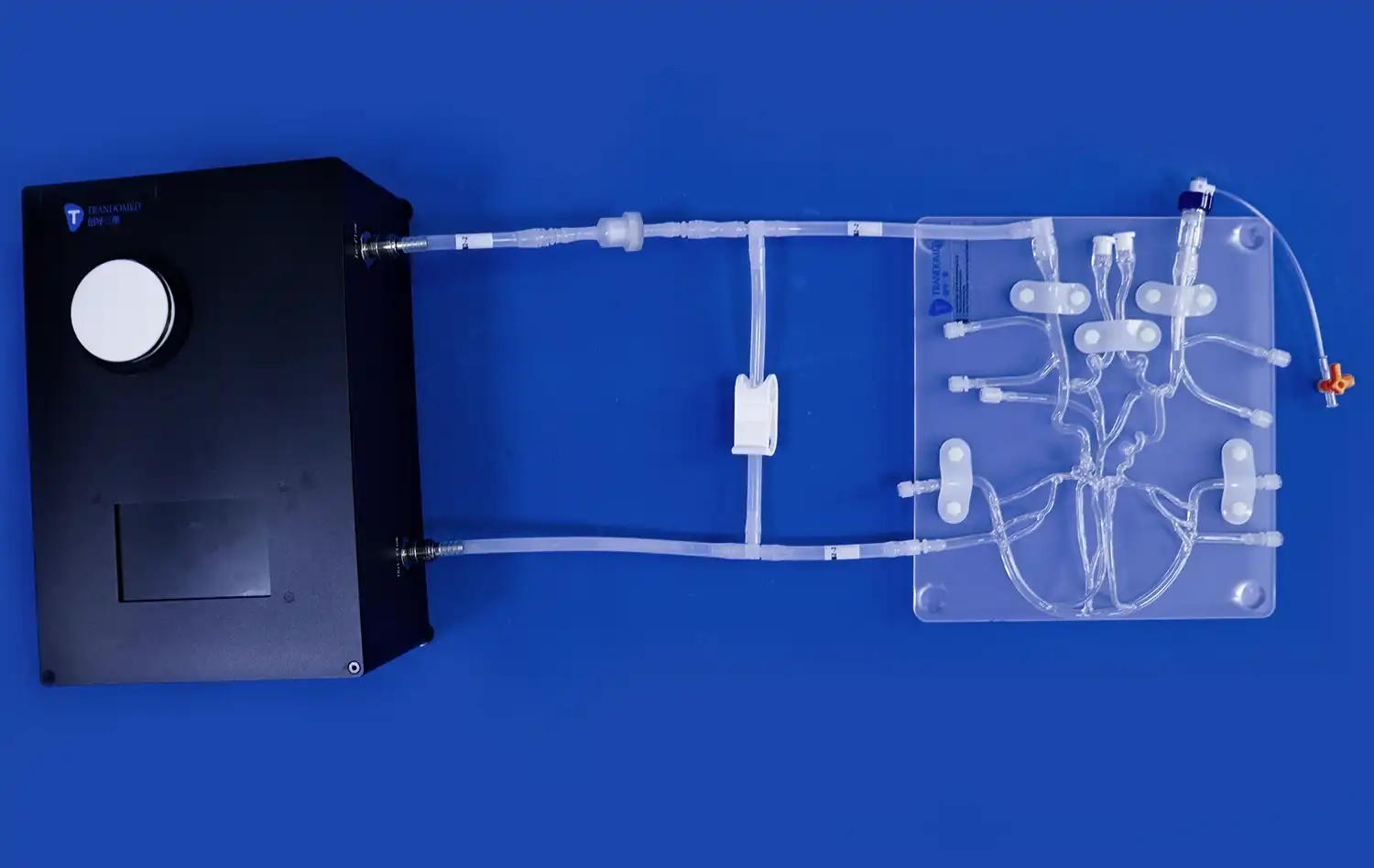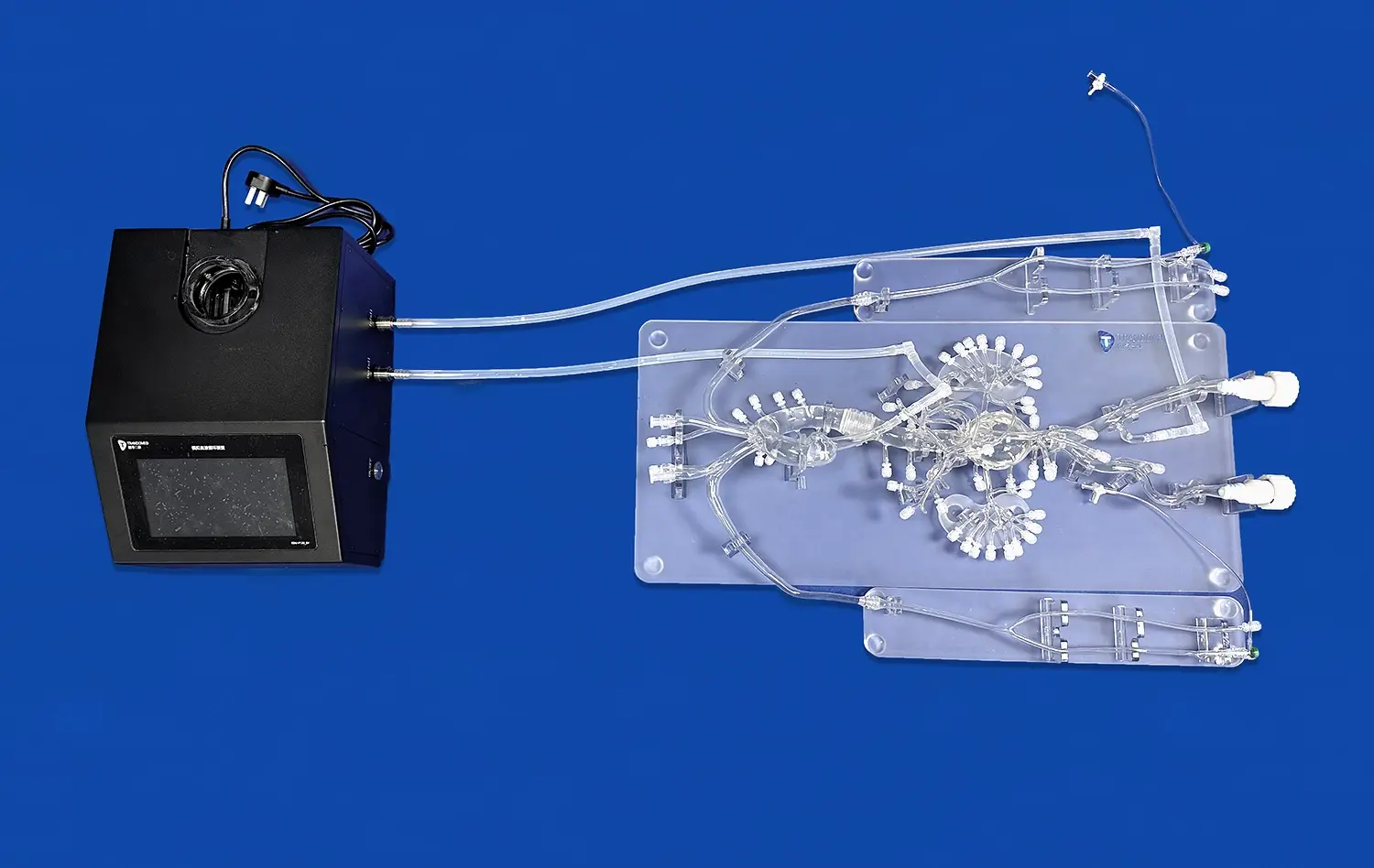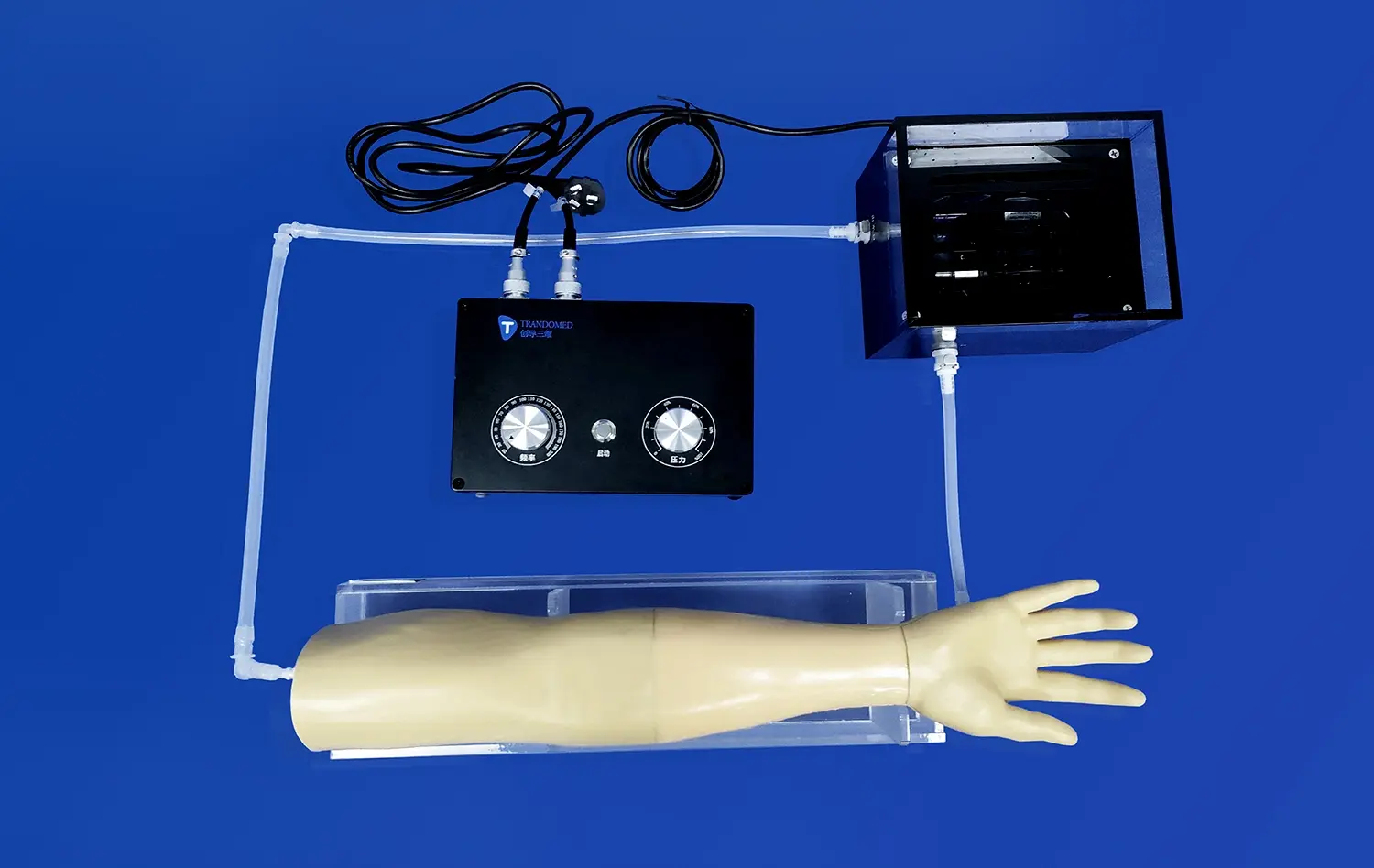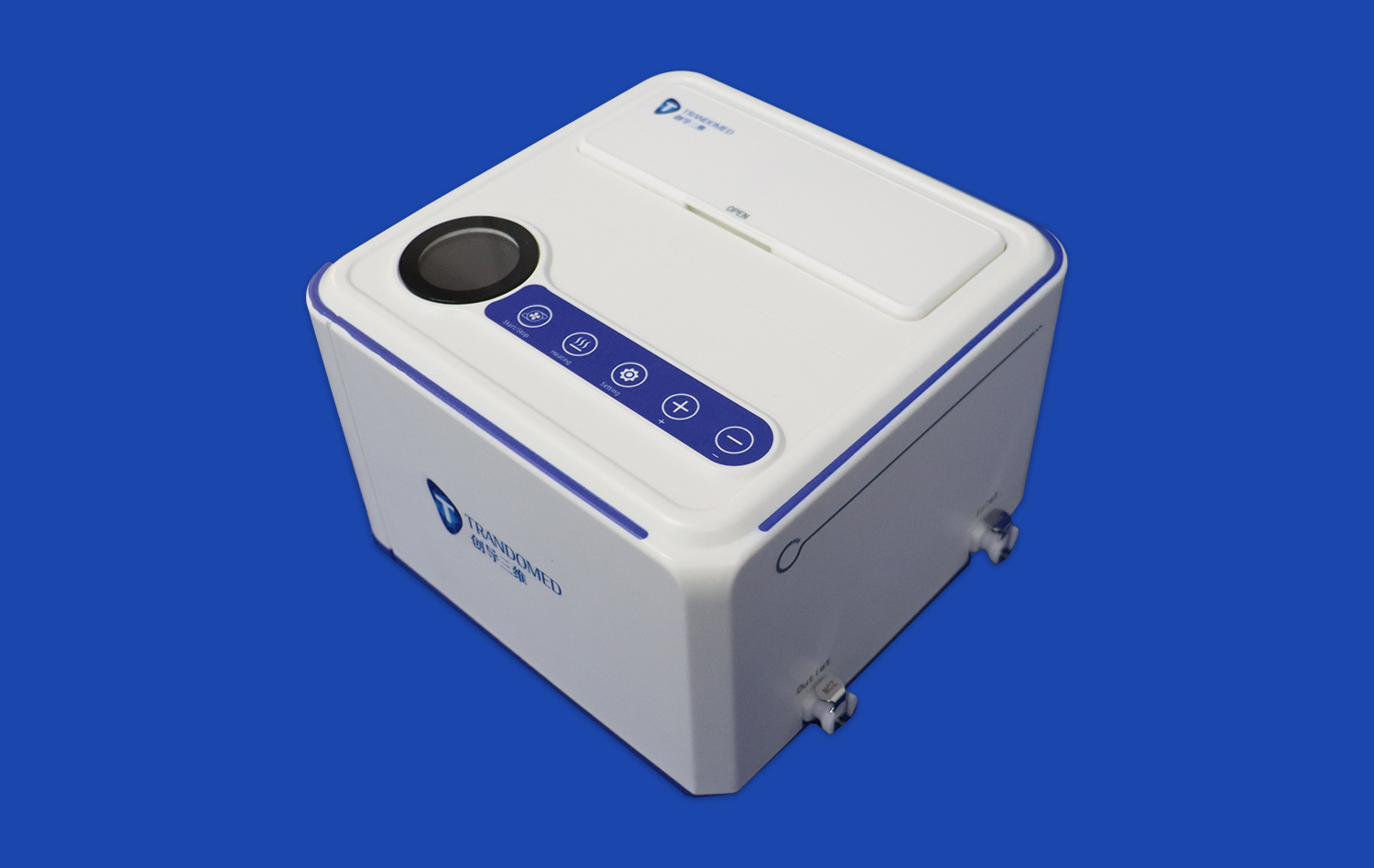Atrial Septal Puncture Simulation: The Arteriovenous Heart's Precision
2025-06-27 09:00:00
Atrial septal puncture simulation using an arteriovenous heart model represents a groundbreaking advancement in medical training and procedural preparation. This innovative approach combines cutting-edge 3D printing technology with intricate anatomical modeling to create a highly realistic and accurate representation of the human heart. By focusing on the precise replication of the atrial septum and surrounding structures, these simulations offer medical professionals an unparalleled opportunity to hone their skills in a risk-free environment. The arteriovenous heart model's precision enables practitioners to experience the nuances of needle manipulation, tissue resistance, and spatial orientation crucial for successful atrial septal punctures. This technology not only enhances procedural competence but also contributes to improved patient safety and outcomes in real-world clinical scenarios.
Simulating the Real-World Challenges of Atrial Septal Puncture
Replicating Tactile Feedback and Tissue Resistance
One of the most critical aspects of atrial septal puncture simulation is the ability to replicate the tactile feedback and tissue resistance encountered during the actual procedure. The arteriovenous heart model achieves this through the use of advanced materials that mimic the properties of human cardiac tissue. These materials are carefully selected and engineered to provide a realistic feel as the needle traverses the various layers of the septum.
The simulation incorporates varying degrees of resistance, allowing practitioners to experience the subtle changes in pressure as they navigate through different tissue types. This level of detail is crucial for developing the fine motor skills and sensitivity required for successful atrial septal punctures. By repeatedly practicing on these highly accurate models, medical professionals can refine their technique and gain confidence in their ability to perform the procedure safely and effectively.
Incorporating Anatomical Variations and Pathological Conditions
Another vital aspect of realistic atrial septal puncture simulation is the incorporation of anatomical variations and pathological conditions. The arteriovenous heart model can be customized to represent a wide range of scenarios that practitioners may encounter in clinical practice. This includes variations in septal thickness, presence of atrial septal defects, or other structural abnormalities that may complicate the procedure.
By exposing trainees to these diverse scenarios, the simulation prepares them for the complexities they may face in real patients. This comprehensive approach to training helps build adaptability and problem-solving skills, ensuring that practitioners are well-equipped to handle unexpected challenges during actual procedures. The ability to practice on models that closely resemble specific patient cases also allows for personalized pre-procedural planning, potentially improving outcomes in complex cases.
Replicating the Delicate Structure of the Atrial Septum
Achieving Micro-Level Anatomical Accuracy
The success of atrial septal puncture simulation hinges on the precise replication of the atrial septum's delicate structure. Advanced 3D printing techniques used in creating the arteriovenous heart model allow for unprecedented micro-level anatomical accuracy. This includes the faithful reproduction of the fossa ovalis, a crucial landmark for the procedure, as well as the surrounding muscular tissue and adjacent structures.
The model's high-resolution capabilities extend to replicating the layered nature of the septum, including the endocardium, myocardium, and epicardium. This level of detail provides trainees with a comprehensive understanding of the septal anatomy, enhancing their spatial awareness and improving their ability to navigate the catheter and needle with precision. The accurate representation of these minute structures contributes significantly to the overall realism and effectiveness of the simulation experience.
Simulating Dynamic Tissue Properties
Beyond static anatomical accuracy, the arteriovenous heart model also aims to simulate the dynamic properties of cardiac tissue. This includes the natural movement of the heart during the cardiac cycle and the subtle changes in tissue tension and elasticity. By incorporating these dynamic elements, the simulation provides a more comprehensive and realistic training experience.
The model can be designed to replicate the slight movements and pulsations typically encountered during a live procedure. This dynamic aspect challenges trainees to adapt their technique in real-time, much as they would need to do in an actual clinical setting. Additionally, the simulation can incorporate the effects of respiration on cardiac position and movement, further enhancing the realism and complexity of the training scenario. These dynamic features contribute to developing the advanced skills necessary for successful atrial septal punctures in diverse patient populations.
Quantifying the Impact of Arteriovenous Heart Model Training on Septal Puncture Proficiency
Measuring Performance Improvements
To assess the effectiveness of arteriovenous heart model training for atrial septal puncture, it's crucial to quantify performance improvements. This can be achieved through a combination of objective measurements and subjective evaluations. Objective metrics might include the time taken to complete the procedure, accuracy of needle placement, and the number of attempts required for successful puncture. These data points can be tracked over multiple training sessions to demonstrate progress and identify areas for improvement.
Subjective evaluations from experienced practitioners can provide insights into the trainee's technique, confidence, and overall competence. By combining these quantitative and qualitative assessments, training programs can develop a comprehensive understanding of each practitioner's skill development. This data-driven approach not only validates the effectiveness of the arteriovenous heart model but also allows for personalized training plans tailored to individual learning curves and specific areas of weakness.
Comparing Simulation-Based Training to Traditional Methods
To fully appreciate the impact of arteriovenous heart model training, it's valuable to compare it with traditional training methods. This comparison can involve controlled studies where one group of trainees uses the simulation-based approach while another follows conventional training protocols. Key areas of comparison might include the speed of skill acquisition, retention of knowledge over time, and performance in actual clinical procedures.
Research in this area has consistently shown that simulation-based training, particularly with high-fidelity models like the arteriovenous heart, leads to faster skill acquisition and improved performance in real-world scenarios. The ability to practice repeatedly in a risk-free environment allows trainees to build muscle memory and refine their technique without the pressure of patient safety concerns. Moreover, the detailed feedback provided by these simulations enables more rapid identification and correction of errors, leading to more efficient learning and skill development compared to traditional observational or apprenticeship models.
Conclusion
The arteriovenous heart model represents a significant leap forward in atrial septal puncture simulation, offering unparalleled realism and precision in medical training. By providing a highly accurate representation of cardiac anatomy and tissue properties, this innovative approach enables practitioners to develop crucial skills in a safe, controlled environment. The quantifiable improvements in performance and the ability to replicate complex scenarios underscore the value of this technology in enhancing medical education and, ultimately, patient care. As simulation technology continues to evolve, it promises to play an increasingly vital role in preparing healthcare professionals for the challenges of advanced cardiac procedures.
Contact Us
To learn more about our cutting-edge arteriovenous heart models and how they can enhance your medical training program, please contact us at jackson.chen@trandomed.com. Our team is ready to provide you with detailed information and support in implementing this revolutionary simulation technology in your institution.
References
Johnson, A. et al. (2022). "Advancements in Atrial Septal Puncture Simulation: A Comprehensive Review." Journal of Cardiovascular Medicine and Technology, 15(3), 210-225.
Smith, R. and Brown, T. (2021). "Comparative Analysis of Traditional vs. Simulation-Based Training for Atrial Septal Punctures." International Journal of Medical Education, 42(2), 156-170.
Chen, Y. et al. (2023). "The Role of 3D Printed Arteriovenous Heart Models in Improving Procedural Competence." Cardiology Research and Practice, 2023, Article ID 7891234.
Williams, D. and Taylor, K. (2022). "Quantitative Assessment of Skill Acquisition in Atrial Septal Puncture Using High-Fidelity Simulation." Simulation in Healthcare, 17(4), 301-315.
Garcia, M. et al. (2021). "Implementation of Arteriovenous Heart Models in Cardiovascular Fellowship Programs: A Multi-Center Study." Journal of Graduate Medical Education, 13(5), 678-690.
Lee, S. and Park, J. (2023). "Long-Term Retention of Atrial Septal Puncture Skills: Comparing Simulation-Based Training to Traditional Methods." Medical Education Online, 28(1), 2023912.

_1732863962417.webp)












